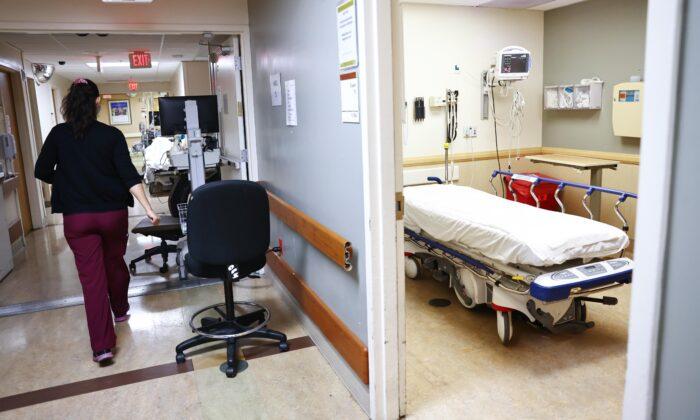CMS is supposed to retrieve that money from states, although when a nonprofit foundation asked for information about those efforts, the agency didn’t respond. The nonprofit is now suing for the information.
Medicaid pays more than $600 billion a year for health services for the poor, disabled, children, and the elderly. About two-thirds of the total used to come out of federal coffers, the rest from states. The March 2020 federal COVID-19 package increased the federal share of the spending to nearly three quarters.
Just a decade ago, improper payments constituted about 6 percent of Medicaid expenses. Based on CMS estimates, that number has ballooned to nearly 15 percent in fiscal 2019 and more than 21 percent in 2020.
That means the improper payments added up to more than $57 billion in 2019 and more than $86 billion in 2020.
The number is likely even higher because CMS analyzes only a third of the states each year and bases the improper payment estimate on a three-year average, according to Brian Blase, economist and former health care policy adviser to President Donald Trump.
Blase said there are “hardly any underpayments” in the system, but acknowledged that a portion could be attributed to paperwork issues. He estimates about a third of the money went to people who weren’t really eligible. Another third went to people for whom it can’t be determined if they were or weren’t eligible. The rest were cases such as overpayments to health care providers and insurance companies.
His estimates are based on audits by some state and federal agencies, including the Government Accountability Office, and other data.
The issue of ineligible people in the program was exacerbated after the COVID-19 package barred states from stripping enrollees of Medicaid during the pandemic, even if they got in fraudulently or lost eligibility, Blase said.
The rising improper payment rates caught the attention of the Americans for Prosperity Foundation (AFPF), a free-market nonprofit partly funded by billionaire Charles Koch. In May, it asked CMS for documents regarding the agency’s efforts to recover the money. After the agency failed to respond, the nonprofit filed a Freedom of Information lawsuit on July 27.
“What happened to the money?” asked Dean Clancy, senior health policy fellow at Americans for Prosperity (AFP), the AFPF’s sister organization.
A ‘Sprawling’ Program
The central idea of Medicaid is to provide people below or near the poverty line with some basic health care. Over the years, however, Congress has loosened the eligibility and expanded it in many directions.It now pays for nearly half of nursing home costs, part of foster care services, and even some health-related school expenses.
“It has grown since 1965 from being a targeted safety net for the truly vulnerable into a sprawling middle-class entitlement, and one that is filled with waste and potential corruption,” Clancy told The Epoch Times.
Wrong Incentives
One of the major problems with Medicaid is the lack of incentives, or even opposing incentives, to minimize fraud, Clancy said.As the program is set up, states are responsible for detecting improper payments, but if they do, they have to return the federal part of the money. That means that for every $4 identified as improperly paid out, the state needs to return about $3 to CMS.
“The fundamental problem with Medicaid is it has two managers but no owner,“ Clancy said. ”And so each side points to the other as the one who deserves blame for the problems.”
Potential Solutions
AFP and other right-leaning experts recommend turning Medicaid into a block-grant program. States would receive funds based on their overall demographics, such as how many poor and disabled people they have. It would be up to the states to provide the services to those who need them the most. Under this system, states would have an incentive to more tightly police who gets the services as it could budget any money saved for more services. But states would also face more risks.According to AFP, pushing health care decisions down to patients through health savings accounts (HSA) is preferable. The idea is for Americans to have special accounts for heath expenses where they and their employers could deposit money tax-free. Interest on the savings as well as payments from those accounts would be tax-exempt, too, Clancy envisions, and the government could provide extra money for the accounts through vouchers based on eligibility, such as poverty or disability.
AFP would like to remove that limitation and let anybody have one.
“People would actually have an incentive to be very careful with how they spend the money since they’re the ones who lose if they waste it or let it get stolen,” Clancy said.





